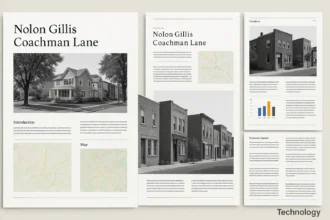In a world where technology dominates our daily interactions, the term “ytislage” has emerged as a crucial concept worth exploring. But what exactly is ytislage? Imagine it as the intricate dance between how we connect with one another and the digital tools that facilitate—or hinder—those connections. As society becomes increasingly intertwined with screens and social media platforms, understanding ytislage can illuminate the nuances of modern communication and relationships.
Whether you’re scrolling through your feeds or engaging in video calls, recognizing how ytislage shapes your experiences is vital. The way you interpret messages, perceive others’ emotions, and foster genuine connections can all be influenced by this phenomenon. In an age where virtual interactions often overshadow face-to-face conversations, it’s essential to delve deeper into what ytislage means for us today. Join me on this journey to unravel its origins, impact on relationships, management strategies, and much more!
Defining ytislage and its origins
Ytislage is a term that encapsulates the complex relationship between technology and human interaction. It refers to the ways in which digital tools affect our communication styles, emotional connections, and social dynamics.
The origins of ytislage can be traced back to the rise of smartphones and social media platforms. As these technologies became integrated into daily life, the way we engage with one another transformed dramatically.
Conversations once rich in nuance evolved into brief text messages or emojis. The immediacy of online interactions has changed how we express ourselves and interpret others’ emotions.
This shift presents both opportunities and challenges. While ytislage allows for instant connection across distances, it can also lead to misunderstandings and feelings of isolation when face-to-face interactions are lacking. Understanding this concept helps us navigate our increasingly digital world more mindfully.
The importance of understanding ytislage in today’s society
Understanding ytislage is crucial in our fast-paced, technology-driven world. It represents a complex interaction between how we communicate and connect with one another.
As social media and digital platforms dominate our lives, recognizing ytislage helps us navigate these channels more effectively. We often underestimate the influence of virtual interactions on real-life relationships.
Awareness of ytislage fosters healthier communication practices. By understanding its dynamics, individuals can build stronger connections both online and offline.
Moreover, as mental health awareness grows, grasping the concept of ytislage allows for better emotional regulation. This knowledge empowers people to set boundaries that protect their well-being while engaging with technology.
In an age where information is abundant yet fleeting, understanding ytislage can help maintain genuine interactions amidst superficial ones. It’s about finding balance in a digitally saturated environment that often blurs the lines between reality and virtuality.
How ytislage can impact relationships and communication
Ytislage can subtly infiltrate our daily interactions. It often creates barriers that hinder genuine communication. When individuals prioritize their devices over face-to-face conversations, misunderstandings arise.
Eye contact becomes rare, and the emotional connection weakens. A simple text message can replace meaningful discussions, leaving many feeling isolated in a crowd of online chatter.
Moreover, constant notifications distract from the moment at hand. Instead of engaging fully with loved ones, attention drifts away to screens. This shift not only affects personal relationships but also professional dynamics.
People may find it challenging to express themselves authentically when immersed in ytislage’s digital constraints. The nuance of tone and body language fades into the background as messages are typed rather than spoken.
In this landscape, fostering deeper connections requires conscious effort to put down devices and embrace authentic interaction once more.
Tips for managing and improving your ytislage
Managing your ytislage starts with awareness. Take a moment to assess how technology affects your daily routine. Are you mindlessly scrolling? Recognizing these patterns can be transformative.
Set boundaries for tech usage. Designate specific times for checking devices, and stick to them. This creates space for real-life interactions that truly matter.
Engage in face-to-face conversations whenever possible. The nuances of tone and body language enrich communication far beyond digital exchanges.
Practice mindfulness when using technology. Focus on one task at a time instead of multitasking across screens. This improves concentration and reduces anxiety related to constant notifications.
Prioritize offline activities that bring joy—be it reading, hiking, or cooking. These experiences foster deeper connections with yourself and others while balancing the influence of technology in your life.
The role of technology in shaping ytislage
Technology plays a pivotal role in shaping ytislage. The rise of social media and instant messaging has transformed how we communicate. With every ping and notification, our attention shifts. This constant connectivity can lead to distractions that affect meaningful interactions.
Smartphones have become extensions of ourselves. They facilitate connections but often at the cost of face-to-face engagement. People may find themselves sitting together yet immersed in their screens rather than each other’s company.
Moreover, technology influences our emotional responses and perceptions of relationships. Online platforms can create unrealistic expectations and foster comparisons, impacting self-esteem.
However, it also offers tools for improving communication skills if used mindfully. Apps designed for mindfulness encourage users to reflect on their technology habits, promoting healthier usage patterns that enhance interpersonal relationships instead of hindering them.
Real-life examples and case studies of successful ytislage management
Case studies reveal how individuals and organizations tackle ytislage effectively. For instance, a tech startup implemented “digital detox” days where employees disconnected from devices. This led to increased creativity and morale.
In another example, a family committed to device-free dinners. They found that this simple change sparked deeper conversations and strengthened their bonds.
Schools have also taken action. One institution introduced a “no phones in class” policy, resulting in improved focus among students and better academic performance.
These examples highlight the transformative power of intentionality in managing ytislage. By prioritizing face-to-face interactions, people rediscover connection beyond screens.
Real-life strategies demonstrate that with effort, it’s possible to create healthier tech habits while nurturing meaningful relationships. Embracing such practices can lead to lasting positive outcomes for both personal lives and community dynamics.
Conclusion
Understanding and managing ytislage is essential in our increasingly digital world. As we navigate through our daily lives, it’s crucial to recognize how technology shapes our interactions and relationships. By embracing a balanced approach to technology use, we can enhance communication while minimizing distractions.
Fostering genuine connections often means stepping back from screens and engaging more meaningfully with those around us. Simple practices like setting designated tech-free times or spaces can lead to deeper conversations and stronger bonds.
Recognizing the impact of ytislage allows us to make conscious choices that prioritize human connection over virtual engagement. In doing so, we not only enrich our relationships but also improve overall well-being.
By cultivating awareness about how technology influences our lives, we empower ourselves to create healthier habits. The goal isn’t about eliminating technology but rather harmonizing its presence with real-life interactions for a more fulfilling experience. Embracing this mindset will help reduce the negative effects of excessive screen time while enhancing the quality of every relationship in our lives.

















